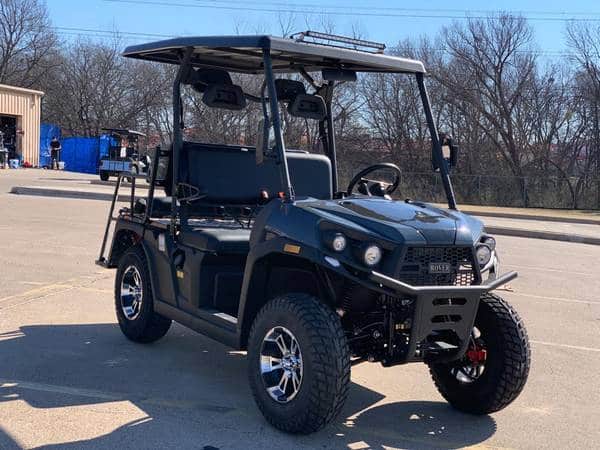 Yes. A low-speed vehicle can usually travel on any California road that has a speed limit of 35 mph or less. Drivers must have a driver’s license, insurance, and a license plate to use public roads.
Yes. A low-speed vehicle can usually travel on any California road that has a speed limit of 35 mph or less. Drivers must have a driver’s license, insurance, and a license plate to use public roads.
A low-speed vehicle (LSV), also known as a neighborhood electric vehicle (NEV), must also meet certain California and federal guidelines to remain street-legal. Owners and operators should know these laws before venturing out on a public street.
What Does California Consider a Low-Speed Vehicle?
An LSV is a small four-wheeled vehicle, usually with an electric motor. The loaded weight of an NEV can’t exceed 3,000 lbs. LSVs are similar to golf carts but they usually weigh more and can reach greater speeds. Since LSVs are street legal, they are required to have more safety features than the standard golf cart.
LSVs reach speeds above 20mph, but they should not be able to go faster than 25mph. California follows Federal guidelines and requires that LSVs that will be traveling on public roads have seat belts, turn lights, brake lights, mirrors, and other safety features.
LSV owners are required to follow these laws, even if a vehicle is simply parked on a California roadway.
You can find out more about the California and Federal laws regarding neighborhood electric vehicles by visiting Maison Law’s site on California LSV laws.
What California Roads Can an LSV Operate On?
California traffic codes state that LSVs are only allowed on roads that have a 35mph speed limit or less posted.
One exception would be if a neighborhood electric vehicle transportation plan has been adopted in a certain area, making additional roads legal for LSV travel. Local traffic officials can change this speed limit requirement if there are certain safety concerns on area roads.
There may also be confusion when LSV operators come to an intersection with a road that posts a speed limit that is above 35 mph. California vehicle codes go over the options for LSV drivers:
CVC 21260.
“(b) (1) The operator of a low-speed vehicle may cross a roadway with a speed limit in excess of 35 miles per hour if the crossing begins and ends on a roadway with a speed limit of 35 miles per hour or less and occurs at an intersection of approximately 90 degrees.”
The vehicle codes also address situations where an NEV driver would have to cross a state highway. This circumstance is handled in the very next section of the vehicle code.
“(2) Notwithstanding paragraph (1), the operator of a low-speed vehicle shall not traverse an uncontrolled intersection with any state highway unless that intersection has been approved and authorized by the agency having primary traffic enforcement responsibilities for that crossing by a low-speed vehicle.”
Using LSVs Safely on California Roads
It’s important to stress that these guidelines may be different in your neighborhood or city. Local transportation officials have the power to alter any access rules for low-speed vehicles in your community if a safety risk is present.
Following your local laws, California laws, and federal mandates on the use of LSVs can protect you and your passengers and maintain your legal right to use local streets. Unfortunately, safe and cautious LSV drivers can still be put in harm’s way by reckless and speeding drivers in large, heavy cars, trucks, and SUVs. Hopefully, the LSV safety guidelines set forth by California lawmakers will prevent the devastating accidents that are possible when smaller vehicles must share the lanes with careless California drivers.
